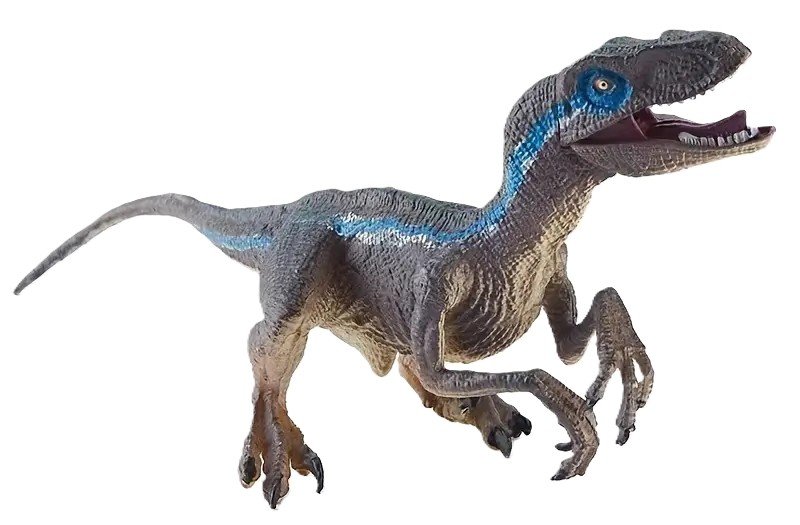
The term raptor comes from the Latin word rapere, meaning “to seize” or “to plunder,” referring to these dinosaurs’ predatory nature. The scientific classification of raptor dinosaurs falls within the Dromaeosauridae family, which includes well-known genera such as Velociraptor, Deinonychus, and Utahraptor. First described in the early 20th century, raptors were recognised for their agility, intelligence, and deadly hunting strategies.
Locations and Distribution
Raptor fossils have been discovered on every continent, with notable finds in North America, Mongolia, China, and Europe. The famous Velociraptor was first unearthed in the Gobi Desert of Mongolia, while larger species such as Utahraptor were found in the United States. Some smaller dromaeosaurs, such as Microraptor, were discovered in China, providing crucial evidence of feathered dinosaurs.
Physical Characteristics
Raptor dinosaurs were medium to small-sized theropods with highly specialised adaptations for hunting:
- Size: Raptors ranged in size from the small Microraptor (about 1 metre long) to Utahraptor, which grew over 6 metres in length.
- Feathers: Many raptors, including Velociraptor, were covered in feathers, indicating a close evolutionary link to modern birds.
- Sickle Claw: One of their most iconic features was the enlarged, sickle-shaped claw on the second toe, which they used to slash and pin down prey.
- Intelligence: Their relatively large brains suggest they were among the most intelligent dinosaurs, potentially hunting in packs.
- Agility: Long legs and a stiffened tail helped maintain balance and speed, making them highly efficient predators.
Archaeological Finds and Discoveries
One of the most famous raptor fossils ever discovered is the “Fighting Dinosaurs” specimen, which captures a Velociraptor locked in combat with a Protoceratops. This fossil, found in Mongolia, suggests raptors engaged in fierce predatory battles. Feather impressions in fossils from China have confirmed that raptors were covered in plumage, reinforcing the evolutionary link between dinosaurs and birds.
Interesting Facts
- Velociraptor was much smaller in reality than its movie depiction in Jurassic Park—about the size of a large turkey.
- Utahraptor was the largest known raptor, growing up to 6–7 metres long and weighing over 500 kg.
- Some raptors, like Microraptor, had four wings and could glide between trees, showing early flight adaptations.
- Studies suggest raptors had excellent eyesight, allowing them to track and ambush prey with precision.
- Fossil evidence indicates that some raptors may have exhibited pack-hunting behaviour, though this is still debated among palaeontologists.
Folklore, Legends and Tales
While raptors themselves were not known in ancient history, their fossils may have inspired myths of dragon-like creatures in various cultures. In Chinese folklore, the idea of feathered, winged dragons could stem from fossilised raptor remains. Additionally, the swift and cunning nature of raptors has made them popular figures in modern media, influencing depictions of predatory creatures in books, films, and video games.
Links with Astrology and the Chakra System
Astrologically, raptors could be linked to Aries, a sign associated with aggression, speed, and strategic thinking—traits that define these dinosaurs. Their intelligence and adaptability might also align with Gemini, representing curiosity and learning.
In the chakra system, raptors are most closely connected to the solar plexus chakra (Manipura), which governs power, instinct, and confidence. Their keen senses and swift movements could also link them to the third eye chakra (Ajna), representing heightened awareness and intuition, crucial for hunting and survival.
